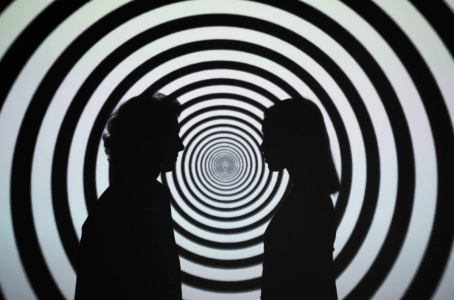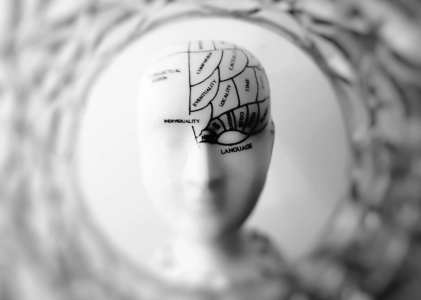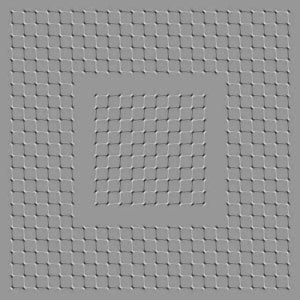Traffic light optical illusion goes viral on TikTok - what colour is it?
- Replies 11
Get ready for your mind to be boggled!
Just like a good workout for your body, mental stimulation keeps your brain in tip-top shape. And this optical illusion is the perfect brain workout.
Illusionist Dean Jackson, known on TikTok as @beatonthebeeb, recently shared a mind-bending traffic light brain teaser that has the internet scratching their heads.
At first, you might think the traffic light is a clear red. But hold on, things are about to get trippy! With a keen eye and sharp mind, you'll discover that the 'red' light is actually grey.
You see, despite knowing the truth, our brain still assumes that the light is red because of our pre-programmed knowledge of traffic lights.
So, it's not just the illusion that's impressive, but the power of our own brains. This fascinating phenomenon shows us that our interpretation of visual images can sometimes be far from reality.

The video has taken TikTok by storm, with almost 2 million likes and countless comments from trance-like users. One user exclaimed, 'I was convinced it was edited, but it's the real deal!' while another thanked Jackson for 'breaking his brain'.
Don't believe us? See for yourself and prepare to have your mind blown!
So… What colour did you see?
The viral traffic light optical illusion is more than just a trick, it's a testament to the lightning speed at which our brain processes images.
Researchers say that our brain is like a powerhouse, constantly organising complex visual information and quickly deciphering illusions.
It's no wonder why we tend to spot patterns and connections between features in a visual object, which is how optical illusions easily become ingrained in our minds - just a few seconds is all it takes for us to see the red light.
It's fascinating to realise just how in tune we are with our own perception and the limitations of our brain in interpreting what we see. While optical illusions may deceive us, they also remind us that there's much more than what meets the eye.
Here are some more optical illusions for your viewing pleasure!
Credit: JUST AMAZING.
Optical illusions can teach us a lot about how we see and understand the world. They show us that the way we perceive an image can be affected by the context and surroundings. This means that sometimes what we see may not be exactly as it seems.
It's important to be aware that our perceptions are not always accurate and we should take the time to understand the details of a situation before making any decisions. This way, we can be sure that what we see aligns with the truth.

Did you know optical illusions have been around since ancient times and continue to captivate people today? They confound expectations and offer glimpses into how our brains process the information we see.
As far back as ancient Greece, humans have been creating optical illusions by manipulating light, perspective, colour, and contrast to trick the brain into seeing something that isn’t actually there. It’s even said that this knowledge was applied to the architecture of the Parthenon.
Over time, scientists have used optical illusions to further explore how the brain works, and their appeal has endured due to their captivating nature.
The study of optical illusions has been intertwined with the field of psychology since the late 19th century when Hermann von Helmholtz first suggested that optical illusions demonstrate the limitations of our perception.
This was later explored by Gestalt psychologists who argued that our brains attempt to make sense of what we see by grouping certain visual elements together and ignoring other details.
This is why we can sometimes perceive optical illusions despite knowing that they are not actually real. As a result, optical illusions have become an important tool in exploring how the brain works and why it can be easily fooled.

They can also help inform scientific studies into the neurological processes underlying perception, attention, and decision-making. For example, researchers have used optical illusions to gain a better understanding of the areas of the brain associated with vision, as well as the way information is weighed and interpreted.
Optical illusions can also be used to help us better understand the different states of human consciousness, such as those associated with altered states of awareness, sleep, and clinical disorders such as epilepsy, aphasia, and schizophrenia. By studying the effects of different optical illusions, researchers can gain a greater understanding of how brain activity is affected by changing conditions.
Optical illusions also offer insights into the creative process as some of the most well-known illusions have been designed by artists as a way to explore colour, contrast, and depth.
In recent years, with the emergence of social media, optical illusions have become more accessible and shareable than ever, leading to an explosion in the popularity of illusions from both artists and scientists alike.
They continue to captivate people and offer glimpses into both the creative and the scientific realms.
So what do you think of this article, members? Are you amazed by optical illusions? Or can you see behind the smoke and mirrors in some of them? Let us know in the comments!
Just like a good workout for your body, mental stimulation keeps your brain in tip-top shape. And this optical illusion is the perfect brain workout.
Illusionist Dean Jackson, known on TikTok as @beatonthebeeb, recently shared a mind-bending traffic light brain teaser that has the internet scratching their heads.
At first, you might think the traffic light is a clear red. But hold on, things are about to get trippy! With a keen eye and sharp mind, you'll discover that the 'red' light is actually grey.
You see, despite knowing the truth, our brain still assumes that the light is red because of our pre-programmed knowledge of traffic lights.
So, it's not just the illusion that's impressive, but the power of our own brains. This fascinating phenomenon shows us that our interpretation of visual images can sometimes be far from reality.
Key Takeaways
- Illusionist Dean Jackson posted a viral optical illusion involving a traffic light.
- Initially, it appears as though the light is red, but Jackson reveals this is not the case.
- The illusion tricks the eyes into seeing red when in fact the light is actually grey.
Don't believe us? See for yourself and prepare to have your mind blown!
So… What colour did you see?
The viral traffic light optical illusion is more than just a trick, it's a testament to the lightning speed at which our brain processes images.
Researchers say that our brain is like a powerhouse, constantly organising complex visual information and quickly deciphering illusions.
It's no wonder why we tend to spot patterns and connections between features in a visual object, which is how optical illusions easily become ingrained in our minds - just a few seconds is all it takes for us to see the red light.
It's fascinating to realise just how in tune we are with our own perception and the limitations of our brain in interpreting what we see. While optical illusions may deceive us, they also remind us that there's much more than what meets the eye.
Here are some more optical illusions for your viewing pleasure!
Credit: JUST AMAZING.
Optical illusions can teach us a lot about how we see and understand the world. They show us that the way we perceive an image can be affected by the context and surroundings. This means that sometimes what we see may not be exactly as it seems.
It's important to be aware that our perceptions are not always accurate and we should take the time to understand the details of a situation before making any decisions. This way, we can be sure that what we see aligns with the truth.

Optical illusions can provide insight into how our visual system processes information and how we form our perception of the world around us. Credit: Pexels/cottonbro studio.
Did you know optical illusions have been around since ancient times and continue to captivate people today? They confound expectations and offer glimpses into how our brains process the information we see.
As far back as ancient Greece, humans have been creating optical illusions by manipulating light, perspective, colour, and contrast to trick the brain into seeing something that isn’t actually there. It’s even said that this knowledge was applied to the architecture of the Parthenon.
Over time, scientists have used optical illusions to further explore how the brain works, and their appeal has endured due to their captivating nature.
The study of optical illusions has been intertwined with the field of psychology since the late 19th century when Hermann von Helmholtz first suggested that optical illusions demonstrate the limitations of our perception.
This was later explored by Gestalt psychologists who argued that our brains attempt to make sense of what we see by grouping certain visual elements together and ignoring other details.
This is why we can sometimes perceive optical illusions despite knowing that they are not actually real. As a result, optical illusions have become an important tool in exploring how the brain works and why it can be easily fooled.

Researchers have used optical illusions to learn more about the parts of the brain that are responsible for seeing and how information is processed. Credit: Pexels/meo.
They can also help inform scientific studies into the neurological processes underlying perception, attention, and decision-making. For example, researchers have used optical illusions to gain a better understanding of the areas of the brain associated with vision, as well as the way information is weighed and interpreted.
Optical illusions can also be used to help us better understand the different states of human consciousness, such as those associated with altered states of awareness, sleep, and clinical disorders such as epilepsy, aphasia, and schizophrenia. By studying the effects of different optical illusions, researchers can gain a greater understanding of how brain activity is affected by changing conditions.
Optical illusions also offer insights into the creative process as some of the most well-known illusions have been designed by artists as a way to explore colour, contrast, and depth.
In recent years, with the emergence of social media, optical illusions have become more accessible and shareable than ever, leading to an explosion in the popularity of illusions from both artists and scientists alike.
They continue to captivate people and offer glimpses into both the creative and the scientific realms.
So what do you think of this article, members? Are you amazed by optical illusions? Or can you see behind the smoke and mirrors in some of them? Let us know in the comments!










